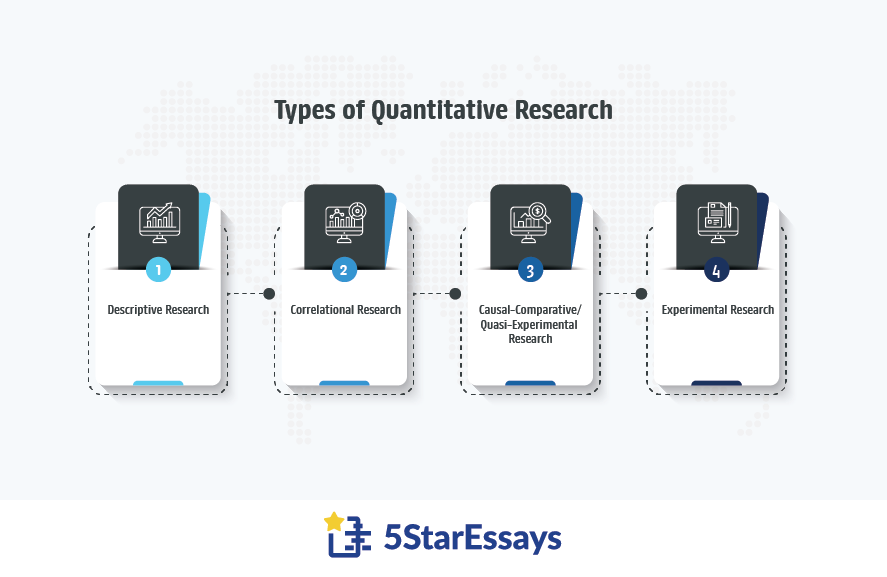What is Quantitative Research?
To obtain numerical data, quantitative research comes into play. Quantitative research is a systematic investigation process of collecting quantifiable data through statistical, mathematical techniques.
Numbers are integral in almost every walk of life, especially in the practical environment. It helps different organizations and people decide where to invest, which projects are effective, etc.
As per the quantitative research definition, it is a way of gathering quantifiable data and quantifying problems. Quantitative research gathers information from a large sample with the help of different sampling methods. Furthermore, it performs statistical analysis on the results.
The type of data that can be quantified varies from behavior, opinions, attitudes to other variables. This data is used to form different facts, develop research patterns, and identify future trends.
The different methods to collect quantitative data are
- Surveys (online, paper, kiosk, mobile)
- Interviews (telephone, face-to-face)
- Observations
- Online polls
- Studies
- Questionnaires
Quantitative research is widely used in the field of social science. Especially in psychology, marketing, sociology, political science, health, and human development. It is also used in the field of mathematics and physics.
Quantitative research is done to create a cause-and-effect relationship between different variables. The data gathered from the research, along with being statistical, is unbiased and logical.
Purpose of Quantitative Research
Quantitative research uses a larger group of people to collect data. It then generalizes them to the overall population to uncover a phenomenon. For instance, a company launching a gadget for high school students. They can perform a survey on high schoolers to see whether they can use it properly.
The results will display if all the high school students in the United States can use the gadget properly or not. This kind of research can prove useful when organizations have much bigger projects. It is effective where the target audience is an entire population of a particular area or age group.
It also helps understand the consumer’s purchasing behavior. And lets the company know whether the service or product is in demand or not.
How to Carry Out Quantitative Research?
There are some important steps that the researcher must follow for quantitative research.
- The first step is to understand and decide on the research problem to be explored.
- Next, develop a research question that will help address and solve the problem at hand.
- Come up with a research plan that you will follow throughout.
- Figure out your target audience and the sample group.
- Go through existing studies and literature relevant to your research question.
- Make sure that you’re not duplicating the existing study.
- You can use the existing results; however, introduce something new with your research.
- Analyze the data and information that you have collected to come up with a solution
Types of Quantitative Research
Here are the four main types of quantitative research:

Types of quantitative research are listed below.
1. Descriptive Research
It is a type of research that clearly defines the current state of a certain subject or an identified variable. It provides a systematic observation of a particular phenomenon.
2. Correlational Research
As the name suggests, it attempts to find a relationship between two things. It determines the existing relationship between two variables based on statistical analysis.
3. Causal-Comparative/Quasi-Experimental Research
It is a type of quantitative research that establishes a cause-and-effect relationship between variables. It investigates the effect of an independent variable on a dependent variable.
4. Experimental Research
It is similar to causal-comparative research. It also attempts to establish a cause-and-effect relationship between variables using scientific methods. It performs true experiments to establish the relation and then see the effects of an independent variable on a dependent variable.
Quantitative Data Collection Methods
Here are some of the quantitative research methodologies that can be used according to the type of study.
Here is a detailed description of each quantitative data collection method.
Questionnaires
A questionnaire is the most frequently used data collection method. It comprises several questions, either paper-based or on a digital platform. Multiple choice questions can also be a part of the questionnaire.
Questionnaires usually have close-ended questions. This means that the participant is provided with different options, and they select the one that applies to them. For open-ended questions, the participants are provided with a field where they can write their answers. No options are given here.
Examples of quantitative research questions can be:
How many times do you work out in a week?
How often do you go shopping in a month?
How frequently do you eat takeaway food in a week?
Pros
- Less time-consuming as compared to interviews
- User-friendly, data collection is easy
- Less expensive even when the sample size is larger
Cons
- Participants don’t have the opportunity to share their thoughts
- In case of failure to understand the questions, results will be inaccurate
- If the questionnaire has a lot of questions, participants might get tired and answer the questions randomly
Interviews
There are two different types of interviews structured and unstructured. They are carried out between the researcher and the participant over the phone or in person.
In a structured interview, the questions are predefined and asked in a proper sequence for in-depth interviews. Whereas, in an unstructured interview, the questions are decided as the interview is taking place. It is more of a conversation. The aim of each type of interview is the same – gather quantifiable data.
Pros
- It leaves no room for difficulties
- Provide in-depth data
- Flexible questions can be changed on the participant’s responses
Cons
- Time-consuming
- Expensive
Observation
In this technique, the participants are observed in their natural setting. They are mostly used for qualitative research but sometimes work for quantitative data. For instance, if someone wants to study the time when a particular area has the most traffic. This can be done after observing that area every day.
Pros
- Cost-effective
- Accurate since the researchers themselves are gathering the data
- Researchers can gather the data according to their feasibility
H4 Cons
- Participants might know that they are being observed, so they may act differently than they normally would
- Requires highly trained observers
- Requires a lot of time
Records
It is a statistical method that uses external data such as old records and statistics to gather quantitative information. For instance, someone is building water pumps in a village. He can use the census done by the government to find out the number of people living there.
Pros
- Accurate and complete data
- Easy and less time-consuming, as the data is already available
Cons
- The data can sometimes be poorly structured, making it difficult to understand
Quantitative Research Designs: Sampling Methods
There are different sampling methods used to select a group of people from the overall population. The sample group will represent the rest of the population. Here are the two methods to determine the sample size for quantitative research:
1. Probability Sampling
In the probability sampling technique, the researchers choose the sample at random. It has four different subtypes, including cluster sampling, stratified random sampling, simple random sampling, systematic sampling.
The probability sampling is further divided into the following types.
- Single random sampling
- Stratified random sampling
- Cluster sampling
- Systematic sampling
2. Non-Probability Sampling
In non-probability sampling, the researcher uses his/her expertise and knowledge to pick a sample. It has five further types: quota sampling, judgment sampling, snowball sampling, consecutive sampling, and convenience sampling.
Non-probability sampling is divided into the following types.
- Convenience sampling
- Consecutive sampling
- Quota sampling
- Snowball sampling
- Judgemental sampling
How is the Collected Data Analysed?
Once you have identified the sample and gathered the data, you must analyze quantitative data. There are different data analysis techniques:
- Excel Spreadsheet – organize the data into a specific format.
- Statistics – mean, median, mode, frequency, percentages, minimum and maximum values.
- Tables – cross-tabulation or TURF analysis
- Survey Software - Online tools can also be used to analyze the data collected through a survey.
Advantages of Quantitative Research
Here are some strengths of quantitative research:
- Results can be generalized
- Accurate results
- Easy to replicate the study
- No room for personal bias
- Wide scope of data collection and analysis
- Easier to test the hypothesis
- High reliability
Weaknesses of Quantitative Research
Although quantitative research is the simplest and easiest type of research, it still has some weaknesses.
- Inadequate in explaining complex subjects
- Use the restricted and precise operational definition
- Some relevant observation is ignored due to predetermined measurements and variables
- Inappropriate sampling, missing data, and structural biases lead to the wrong conclusion
- Use unstructured settings
- Lack of context
Qualitative Vs. Quantitative Research
Quantitative and qualitative research methods are two different techniques used for data collection. Here are some of the differences between quantitative and qualitative research:
| Characteristics | Quantitative Research | Qualitative Research |
| Purpose | Quantify an issue | Explore the issue |
| Hypothesis | Prior to the study | Based on a particular study |
| Data Gathering | Numerical | Text, words |
| Sampling Methods | Random sampling | Purposeful sampling |
| Design | Inflexible | Flexible |
Quantitative Research Examples
Now that you have learned everything about quantitative research, let’s have a look at the examples. The sample papers will help you understand the qualitative data and research better. They will also guide you on how you can write your own quantitative research paper.
This was everything you needed to know before carrying out quantitative research. We understand that it isn’t easy, especially for someone who isn’t familiar with the research method. If you face any difficulty, the experts at 5StarEssays.com are always available to assist.
Contact our essay website today. Place your order and get the best help for your research paper at the most affordable rates.









